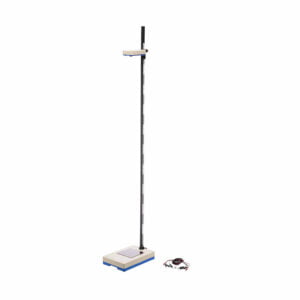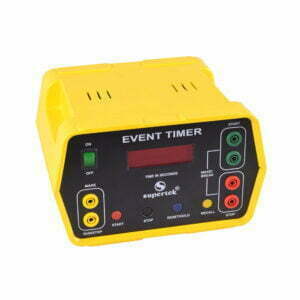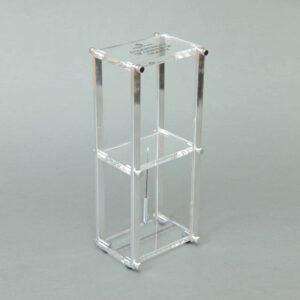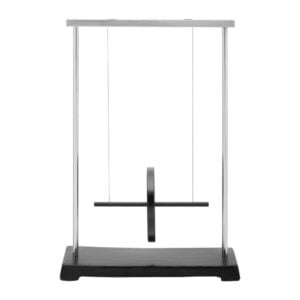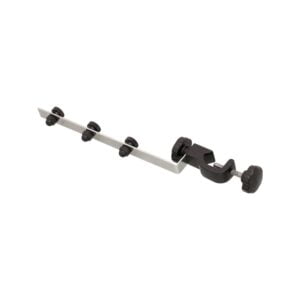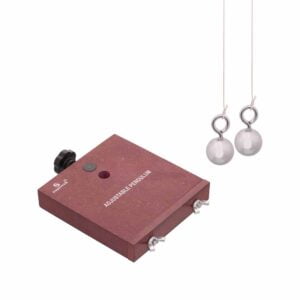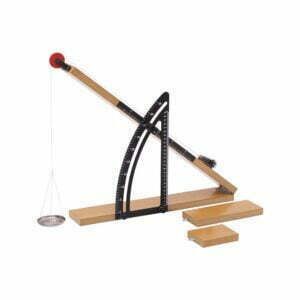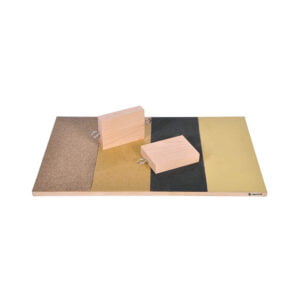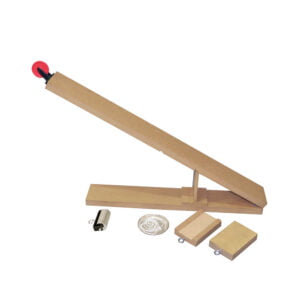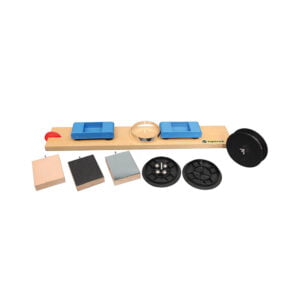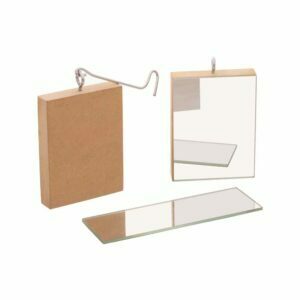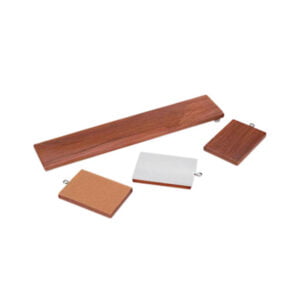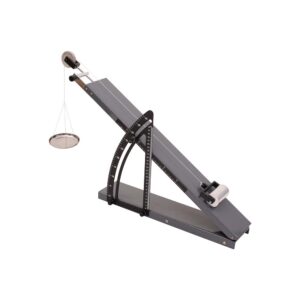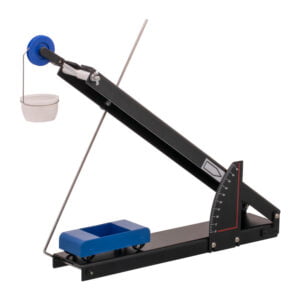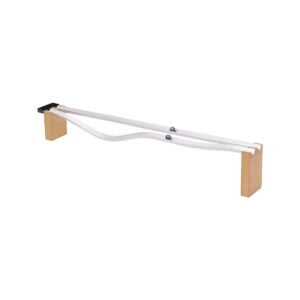-
Mechanics
“G” By Free Fall
The apparatus consists of an electromagnet housed in a plastic case with connections provided for an external timer. It also contains a platform unit containing a switch and terminals for the external timer. The unit is supplied with a heavy steel sphere. With the upper and lower unit connected to the external timer, the sphere is released by moving the switch on the electromagnet to the upward position. This action simultaneously starts the timer. As the sphere hits the cork mat on the platform unit, it activates a switch to turn off the timer.
PH10556B -
-
Mechanics
Apparatus to study the eccentricity of center of gravity
In architectural design, it is recommended that spaces for unusually heavy weights be in basements or in buildings isolated from the main structure. Ductile parallel pipes with a central plumb line, which enable to demonstrate that the center of gravity of solid passes through its support polygon. It is made by positioning the stiff elements asymmetrically with respect to the center of gravity of the story.
PH10559 -
Mechanics
Maxwell’s Wheel
Useful for demonstrating momentum, conservation of energy and torque. A large flywheel suspended by two strong cords. The cords are wound around the shaft of the wheel and then released. The wheel will unwind as it falls but will wind itself back up as the momentum carries the wheel upward in the opposite direction. This oscillation process will continue for several moments gradually coming to a stop as the wheel slowly loses momentum and travels less each time. Include instructions.
PH10562 -
Mechanics
Variable Inertia Bar
This apparatus helps to demonstrate that the torque required to accelerate a flywheel depends upon its moment of inertia rather than its mass. A steel bar 790 x 12 mm is mounted at its centre on a sleeved spindle. The spindle is extended through a sleeve so that the bar may be rotated by a weight and string. Heavy adjustable masses are mounted on each end of the bar and maybe clamped at any desired position, enabling inertia to be varied.
PH10565B -
Mechanics
Pendulum on Stand
Everything You Need to Demonstrate the Properties of Simple Pendulums By suspending several pendulums parallel to one another, you can dramatize the effects of such variables as mass and length on pendulum behavior. This versatile unit consists of a heavy steel base supporting an aluminum rod, with meter stick attached to an adjustable slide which can act as both an index and a stop in addition to a triple pendulum clamp. Also includes instructions and three balls — two 25mm drilled metal balls and one 25mm drilled wooden ball.
PH10566B -
Mechanics
Adjustable Pendulum
This is a double pendulum apparatus to investigate the fundamental properties of pendulum. The length of the pendulum can be varied using the steel balls to observe the effects. It can be mounted to any retort stand upto 13 mm rod diameter. Two steel balls are provided with the apparatus. With this apparatus, the qualitative studies of periods of steel balls with individual string lengths, frequency and beats can be done. A stopwatch is required to examine these ideas quantitatively. User instructions are provided.
PH10566D -
Mechanics
Inclined Plane
Inclined wood plane 600 x 75 mm with pulley at one end, the other being hinged to wood base. A linear scale is fixed to edge of inclined plane and an angular 0-45° scale is fixed to base, with a clamp which also serves as an index. With a metal roller 60 x 25 mm length x dia., 2 wooden blocks and a scale pan with cord.
PH10567A -
Mechanics
Inclined Plane & Friction Board
A 600 x 75 mm plane hinged to base at one end carries a pulley at the other. A movable block enables variation of inclination of plane, a friction slide 100 x 65 mm which is reversible and has one side cut away for half of its area. Complete with metal roller 60 x 25 mm dia., with pan but without masses.
PH10570A -
Mechanics
Investigating Force and Motion (Lab Investigation)
To Investigate friction of a variety of surfaces, find out the relation between weight and friction and Investigate ways to reduce friction using wheels and rollers. The set up can also be used to study Newton’s laws of motion, demonstrate the laws of motion using a Hall’s carriage and explore variable inertia. With Instruction manual.
PH10571 -
Mechanics
Friction Blocks and Surfaces
To illustrate the concept that friction depends on the nature and smoothness of materials. The kit consists of a glass mirror with sandpaper affixed to one side and two wooden blocks, one with a hook and the other with an eye. The latter block has a mirror cemented to one face. Both static and sliding frictional forces between different surfaces can be compared and contrasted using this kit. With instructions.
PH10572F -
Mechanics
Friction Block and Surface Set
To understand the relation between friction and smoothness of materials. Consists of three wooden blocks measuring approximately 3-15/16″ L x 2- 3/4″ W with hooks. The first block has a polished side, the second has a sandpaper side, and the third has an aluminum side. Complete with polished wooden base measuring 14″ L x 2-3/4″ W.
PH10573 -
Mechanics
Inclined Plane Kit
To investigate acceleration, friction, gravity and free-fall experiments. The inclined plane folds easily for storage with a special hinge. Clamps to 45° and includes a protractor and pulley. All-aluminum construction supplied with Hall’s carriage, pulley, weight pan, solid aluminum plane and accessories, with detail & illustrated instructions.
PH10578 -
Mechanics
High/Low Road
To demonstrate that shortest distance between two points is not necessarily the fastest while providing an excellent dramatization of potential and kinetic energy and friction. Two balls are released simultaneously one on a straight metal track, the other on a bent metal track.
PH10579

